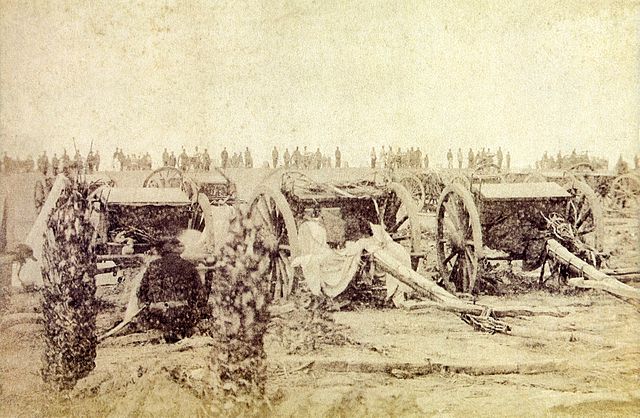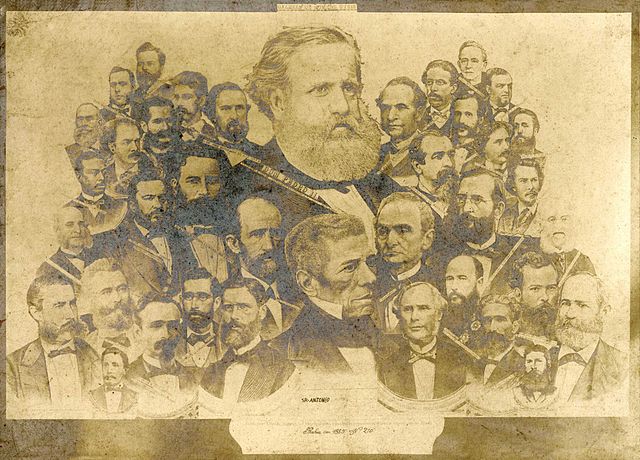Second reign (Empire of Brazil)
The Second Reign is a period of history within the Empire of Brazil that lasted 49 years, beginning with the end of the regency period on 23 July 1840, upon the declaration of Pedro de Alcântara's majority, and ending on 15 November 1889, when the parliamentary constitutional monarchy in force was removed by the proclamation of the republic.
Emperor Pedro II in his majestic costume with imperial insignia
D. Pedro II landing in Recife, province of Pernambuco, in 1859, about a decade after the end of the Praieira Revolt, the biggest and last insurrection of the Second Reign.
The Christie Question (1862 to 1865): the diplomatic conflict and near-war between the Brazilian Empire and the British Empire.
Battle of Riachuelo, by Victor Meirelles.
The Empire of Brazil was a 19th-century state that broadly comprised the territories which form modern Brazil and Uruguay until the latter achieved independence in 1828. Its government was a representative parliamentary constitutional monarchy under the rule of Emperors Pedro I and his son Pedro II. A colony of the Kingdom of Portugal, Brazil became the seat of the Portuguese Empire in 1808, when the Portuguese Prince regent, later King Dom John VI, fled from Napoleon's invasion of Portugal and established himself and his government in the Brazilian city of Rio de Janeiro. John VI later returned to Portugal, leaving his eldest son and heir-apparent, Pedro, to rule the Kingdom of Brazil as regent. On 7 September 1822, Pedro declared the independence of Brazil and, after waging a successful war against his father's kingdom, was acclaimed on 12 October as Pedro I, the first Emperor of Brazil. The new country was huge, sparsely populated, and ethnically diverse.

A locomotive in Bahia province (Brazilian northeast), c. 1859
Brazilian artillery in position during the Paraguayan War, 1866
Emperor Pedro II surrounded by prominent politicians and national figures c. 1875
Belém, a medium-sized city and capital of Pará province (Brazilian north), 1889








